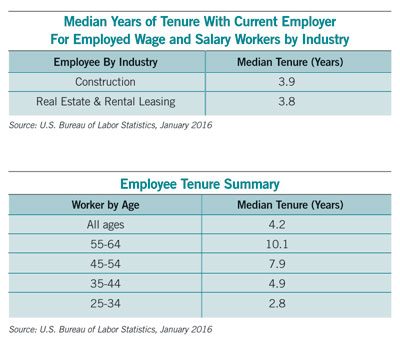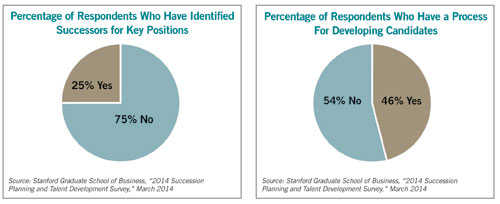The Time for Succession Planning Is Now

CRE companies must take proactive steps to develop succession plans for management and other key positions.
FINDING AND RETAINING great talent has always been a challenge for executives, no matter the industry or geographic location. As current leaders prepare to retire, companies are also challenged with identifying qualified successors. According to Christopher Lee, president and CEO of CEL & Associates, Inc., and producer of the “2016 NAIOP Commercial Real Estate Compensation Survey,” nearly 71 percent of surveyed real estate firms are having a hard time finding, recruiting and hiring talent. Nothing is more important to a firm’s ongoing success than the quality and depth of the team.
Top-performing companies respond to this challenge by taking proactive steps to develop succession plans for management and other key positions within the organization. The development of these plans can serve two purposes: to keep valued employees engaged with professional development opportunities and to identify successor candidates for management positions.

Julie Eisenhauer
An effective succession plan should include the following steps:
Identify Potential Leadership Gaps
Take an inventory of your company’s current leadership team. Identify who will be retiring and when. Start with the following questions:
1) What positions will need to be filled in one year, three years and five years?
2) Which skills, talents and abilities do members of your management team require? Which of these is it currently missing?
3) Considering changes in the industry, technology and the environment, what additional skills, talents and abilities will be needed in the future?
As you go through this analysis, evaluate your organizational structure. Are the right people in the right positions? Establish a timeline for leadership transition and list the skills, talents and abilities required for each position. Document a plan to resolve any leadership gaps that have been identified.

Identify Successor Candidates
Review your current staff and identify those who have the skills, capacity and passion to grow with the firm. Who would be the most effective leaders? Do they have the technical and “people” skills required? Make a list of the gap in skills identified and have a conversation with each candidate to understand his or her interests and desire to take on a future leadership role. Determine what actions are needed to close the skills gap and the timeline in which that must be accomplished.
Develop Action Steps
Once you have identified successor candidates, create an individual development plan for each. This plan should be aligned with the timeline established for leadership transition. It should include requirements for education, training, core competencies and exposure to specific business operations.
Locate or create training programs and provide opportunities for candidates to get involved in operations. Provide mentors who can coach these candidates and hold them accountable in achieving their goals. Schedule regular check-in meetings to review the status of goals, accomplishments and areas for improvement. Evaluate the need to revise the development plan based on changes in the business or leadership skills required.
One national general contractor and development company that has implemented many of these steps in its leadership development plan has experienced positive results in staff retention, achievement of employee career goals and accelerated promotions. On an annual basis, the company looks out five to seven years to identify gaps in leadership positions and the “rock stars” within the organization who may fill those gaps.

The company then invests in the development of these future leaders by getting them involved in an advanced leadership program that focuses on the development of technical, leadership and strategic thinking skills. The participants in the program work with their managers and sponsors to create an action plan with both short- and long-term goals. Participants are then held accountable for achieving their goals during check-in meetings throughout the year.
Finding, retaining and grooming great talent can be a challenge for many businesses. To compete successfully, a commercial real estate company must take proactive steps to develop a plan that engages talented employees and provides for smooth transitions of leadership. Consider working with an advisor who can help management develop a systematic plan that will ensure the sustainable success of the business.
Julie Eisenhauer, CPA, audit and assurance shareholder, Clark Nuber PS






